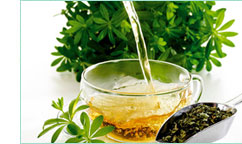DESCRIPTION
Angelica is a genus of around 60 species of tall biennial & perennial herbs in family Apiaceae. It has large bipinnate leaves compound umbels of white or greenish-white flowers. The oil is extracted from roots, rhizome, seeds and through steam distillation process and is used as flavouring agents or medicinal properties for their properties.
COMMON NAMES
Angelica root; Angelicae sinensis radix; Angelicae radix; Ligustici radix, Yam Rhizome P.E., Radix Rehmanni, Hawthorn
BLENDS WITH
Angelica Floral Water can be added to creams & lotions. It can also be added to a bath in place of normal water and can be used as a deodorant, facial spritzer and as a cooling agent in saunas.
CONSTITUENTS
camphene, a-pinene, b-pinene, a-phellandrene, sabinene, myrcene, b-phellandrene, limonene, cis-ocimene, p-cymene, trans-ocimene, terpinolene, bornyl acetate, copaene, terpinen-4-ol, b-bisabolene, cryptone, rho-cymen-8-ol, tridecanolide, humulene oxide and pentadecanolide.
USES
Angelica is used as a flavouring agent in culinary applications. It also has medicinal use, topical/ aromatic use as well as use in therapeutic practices, for its properties like antispasmodic, depurative, carminative, digestive, diaphoretic, hepatic, diuretic, nervine, febrifuge, stimulant, stomachic and tonic.









